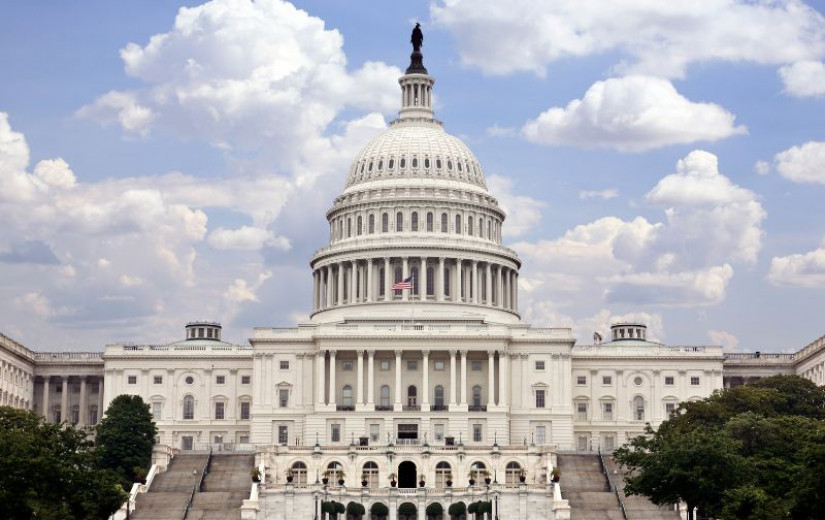
For nonprofits in McDowell County, West Virginia, the federal cuts in the One Big Beautiful Bill Act threaten a lifeline.
Many of McDowell’s 17,000 residents rely on federal programs and the nonprofits they fund to get by. The county’s tax base and population have significantly declined since 1950, when McDowell was the top coal-producing county in the nation and had about 100,000 residents.

An overview of the city of Welch is seen May 31, 2023, in McDowell County, W.Va.
Now, more than half of the children in the county get federal Children’s Health Insurance Program benefits, and about one-third of seniors are on Medicaid, the federal health insurance program for the poor. Decades after the Kennedy administration made the county a first test of food stamps, nearly half the county’s residents receive supplemental nutrition assistance, or SNAP, the Food Stamp Program’s successor.
The strains created by new eligibility restrictions on SNAP as a result of the passage of President Trump’s domestic policy bill will be especially dire in places like McDowell County, where more than one-third of the population lives below the federal poverty line, said Rosemary Ketchum, executive director of the West Virginia Nonprofit Association.
People are also reading…
“These federal cuts are starving people,” she said.
Since the interruption in federal support tied to President Trump’s January executive orders barring grants related to “gender ideology”; diversity, equity and inclusion; and environmental justice, Ketchum said many of the 9,000 or so nonprofits in her state have laid off staff. Others, she said, are dipping into whatever reserves they have to pay their employees.
Those reserves are slim, if they exist at all. Taken together, the seven nonprofits that receive federal grants in McDowell County run on a 3 percent operating margin, according to data tabulated by the Urban Institute’s National Center for Charitable Statistics. If all federal support disappeared, the center found, all of the county’s nonprofits would be at risk of going under unless other funding was provided.
In a poor state like West Virginia, which is already facing a budget deficit and lacks the legions of philanthropic donors who got rich on Wall Street or in Silicon Valley, nonprofits don’t have a plan B, said Kathy Gentry, executive director of Safe Housing and Economic Development, or SHED, a McDowell nonprofit housing provider.
The nonprofit’s clients, many of whom are elderly or disabled, rely on U.S. Housing and Urban Development support to cover the rent at the 94 housing units SHED manages.
Already the nonprofit operates at a loss. In its 2023 tax filing, the most recent available, SHED’s $663,000 in expenses outstripped its revenue by nearly $200,000.
“We’re in a quandary here — all nonprofits are,” Gentry said. “Are we going to exist? Will we have to dissolve?”
Since 2015, Heidi Binko and her team at the Just Transition Fund have worked with economic development agencies and nonprofits in areas where the coal industry once flourished.
The fund was created by the Rockefeller Family Foundation and Appalachian Funders Network to help coal towns capture some of the dollars provided in the 2015 Clean Power Plan, or POWER Act, passed during the Obama administration. Since then, the fund says it has helped coal communities in West Virginia and throughout the nation secure more than $2 billion in federal grants.
Binko hopes the fund can continue to attract federal resources to towns with high poverty rates.
“There are still federal dollars available,” she said. “They haven’t all been zeroed out.”
The recently passed domestic policy bill, for instance, contains $50 billion in health care grants over 10 years for rural providers, though it is unclear whether that money will keep hospitals and clinics that rely on Medicaid dollars afloat.
Two hallmarks of the Biden administration’s infrastructure and stimulus acts — transitioning away from a carbon-based economy and providing federal resources among different populations equitably — are not a focus of the Trump plan. As a result, Binko fears recent progress will be dimmed.
For instance, Generation West Virginia, a Just Transition Fund grantee worked with McDowell County to apply for funds from the Biden administration’s Digital Equity Act to run an elementary and middle school digital literacy program. Programs under the act were terminated in May.
The cancellation of the Digital Equity Act is a setback for McDowell, where 20 percent of households don’t have a broadband internet connection, according to a Generation West Virginia report.
Other, more basic infrastructure is lacking in the county. According to DigDeep, a nonprofit that assists with clean water access and wastewater systems and is primarily funded by private institutions, corporate partners and grassroots donations, there may be hundreds of people in the county without a dependable water supply. The exact number is unknown because information on whether existing water systems provide safe drinking water is not gathered by the U.S. Census.
DigDeep works with the McDowell Public Service District utility provider to identify residents who need a water hookup and helps secure grants from the U.S. Department of Agriculture’s rural development program to extend water trunk lines to hard-to-reach areas. In some cases, the nonprofit helps pay to connect the federally supported water lines directly to people’s homes. It is also helping to install wastewater treatment facilities.
The water supply throughout the county is unreliable because of the area’s close historical ties to the rise and fall of the coal economy, said George McGraw, DigDeep’s chief executive.
When coal operations came to McDowell, businesses operated in a “closed loop” environment. Coal companies paid workers to build and work in the mines, they owned the houses where miners lived, and they built the water lines that served those houses, McGraw said.
When the coal industry began to peter out, companies left the county, leaving behind an aging system of pipes and drains.
Budget cuts impact national parks: What visitors need to know
Budget cuts impact national parks: What visitors need to know

On Feb. 14, 2025, the National Park Service laid off about 1,000 probationary employees, targeting those hired less than a year ago, as part of efforts to downsize the federal workforce under the Trump administration. Additionally, over 700 employees opted to resign, further reducing staff levels. These staffing changes occurred just weeks before the busy season, typically from May to September, creating operational challenges across the 428 sites within the national park system, Outwander reports.
The effects of these cuts vary across parks:
- Grand Teton National Park: Reports indicate that 16 of 17 supervisory positions were eliminated, leaving only one person to manage seasonal hiring.
- Shenandoah National Park: At least a dozen positions, particularly in maintenance and fee collection, were cut, potentially affecting trail accessibility.
- Yosemite National Park: The park has halted reservations for 577 camping spots and reduced service hours, with some visitor centers facing closures.
Conservation organizations, including the National Parks Conservation Association (NPCA), have raised alarms about both immediate and long-term consequences. The NPCA highlights a growing maintenance backlog exceeding $22 billion, which could worsen with reduced staffing. Additionally, gateway communities—towns reliant on park tourism—may face economic ripple effects if visitor experiences deteriorate.
Despite the cuts, the NPS plans to hire approximately 5,000 seasonal workers for summer operations, a temporary measure to address immediate needs. However, this cannot fully compensate for the loss of permanent staff. For travelers, preparation is key:
- Research current conditions at specific parks before visiting.
- Consider visiting during weekdays or shoulder seasons.
- Bring additional supplies and expect fewer services.
- Prepare for potential facility closures or reduced hours.
Despite these challenges, visitation remains high. In 2023, the NPS recorded 325.5 million visits, and 2024 saw a record 331.9 million visits, a 2% increase. Interestingly, the NPS has been instructed not to publicize these record figures, as reported by SFGate (SFGate).
To address staffing gaps, parks are exploring expanded partnerships with nonprofit organizations. The NPS has long collaborated with groups like the National Park Foundation, and these partnerships may help mitigate some operational challenges.
As summer approaches, visitors should adjust their expectations while recognizing that America's national parks remain extraordinary destinations worth exploring with proper preparation and a flexible mindset.

This story was produced by Outwander and reviewed and distributed by Stacker.









